A Conversation With Lance Edmands (BLUEBIRD)
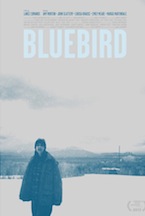 (Bluebird world premiered in the Narrative Competition at the 2013 Tribeca Film Festival.)
(Bluebird world premiered in the Narrative Competition at the 2013 Tribeca Film Festival.)
Besides launching the career of triple threat Lena Dunham, her breakout film Tiny Furniture helped put her talented team of collaborators on the map as well. That crew included producer Kyle Martin, cinematographer Jody Lee Lipes, and editor Lance Edmands, friends and classmates from their days at NYU’s Tisch School of the Arts. Edmands’ thesis short film Vacationland toured festivals and won awards, and he spent the interim years honing his craft as an editor (Wild Combination: A Portrait of Arthur Russell, Brock Enright: Good Times Will Never Be The Same) before making his feature debut as writer/director with Bluebird. In addition to Martin and Lipes, Edmands surrounded himself with talent for his debut, from production designer Inbal Weinberg (Blue Valentine, Pariah) to the stellar cast. Edmands’ vision for the film is thoughtful and specific, from a visual aesthetic of master shots, to prop details like the coffee brandy that is a Maine fixture. But he frankly admits to making rookie mistakes, like writing a blizzard into the plot (luckily the production was blessed with a snowstorm).
The film revisits the Maine landscape of Lance’s childhood, though there’s nothing sentimental in the frozen, economically depressed mill town that is the backdrop for Bluebird. Edmands’ story centers on two families drawn into conflict by a terrible accident, but takes its time introducing the ensemble cast of characters. Theater vet Amy Morton plays Lesley, a bus driver married to Richard (Mad Men‘s John Slattery), a logger who works at the mill. They have a loving but terse, distant relationship with their daughter Paula (Emily Meade), a bored teenager beginning to test the boundaries. Marla (Louisa Krause) has already blown past those boundaries, a drifting woman who takes pills and passes out in the bathtub. She’s a reluctant and dangerously neglectful mother to her young son, and he is mostly cared for by his grandmother Crystal, played with weary anger by Margo Martindale. Crystal’s grandson falls asleep in the bus on the way home from school, and a momentary distraction causes Lesley to overlook the sleeping boy during her end-of-shift inspection. Bluebird follows the deepening consequences that spiral out from this small mistake.
I caught up with Lance Edmands after the film’s world premiere at the Tribeca Film Festival to talk about the process of making Bluebird.
Hammer to Nail: I thought we could start by talking about the landscape. It seems to be such a clear part of the aesthetic of the film. How do you feel the landscape of Maine informs the story and characters of Bluebird, or vice-versa?
Lance Edmands: With this particular film I felt like maybe I was working a little bit backwards. I was starting with the place, and starting with an emotion that I got from the place, and then building the story into that. In a lot of ways I was primarily inspired by this town in northern Maine—I grew up in Maine—and the world there, of these small mill towns situated at the edge of the Great North Woods, which is a huge wilderness territory that takes up the whole northwest part of the state, and has just an infinite number of trees owned by lumber companies.
H2N: It sounds like something out of Game of Thrones, beyond the wall…
LE: I’ve actually never seen that show, but yeah, it’s like the enchanted forest or something. These mill towns that are there are kind of ghost towns at this point, because the mills are closing, and the economy is failing, and they’re very much one-industry towns. There’s this incredible contradictory emotion that I got from the place, where I felt like it was really beautiful and the landscape was gorgeous—there are mountains and trees, and [there’s] a tremendous amount of natural vitality, and it’s very quiet—but at the same time it’s also kind of horrifying and there’s a real desperation there. And there’s a real almost existential terror that you get from the unyielding nature of the forest, and the cold, and the grueling physical world. In a lot of ways, I started with that and built a story around this sort of contradictory emotion.
H2N: Are you from a small town like that?
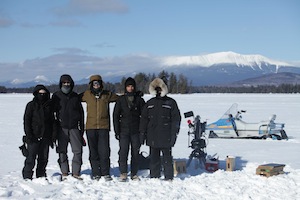 LE: I am. I grew up in the southern part of the state, and I was always interested in the landscape of Maine and my childhood memories of Maine, but also the mythologies. I definitely think that this Maine where the film is set is very much the mythic Maine, the almost old-school Maine of years past. There’s something frozen in time about it which was really appealing to me.
LE: I am. I grew up in the southern part of the state, and I was always interested in the landscape of Maine and my childhood memories of Maine, but also the mythologies. I definitely think that this Maine where the film is set is very much the mythic Maine, the almost old-school Maine of years past. There’s something frozen in time about it which was really appealing to me.
H2N: It seems like you started the writing process from the landscape and then moved to the specifics of the story. The film seems to suggest, through the use of the still, composed landscape shots weaving through the story, that the landscape exerts an influence on the characters. Is that something you wanted to parallel in the visuals of the film, or was it more something that was in your mind as you were writing?
LE: The landscape finds its way into the characters in the sense that there’s this overbearing chaos of the natural world. A lot of it, to me, was about how these characters find meaning amidst what feels kind of like an unforgiving natural world. There’s an opening quote in the film from Thoreau that talks about that, and about the sort of existential terror that you get from this feeling of being a tiny person amidst this unforgiving landscape. I wanted the movie to be about people whose fate was somewhat out of their own control, and about what they had to go through to cope with that and how they could find meaning in it.
H2N: Most of your cast—a really impressive lineup of actors!—are professional actors from elsewhere. The northern Maine mill town is such a specific world, how did you work with the actors to get them to interact with or get a sense of this?
LE: It was a difficult cast to put together because it’s very much an ensemble. And there are two different families in the film, and building a family when you’re casting is usually very difficult, to find people who seem like they really fit together and are really believable as a family unit, and we had two of those. So that was a challenge. And it was also a challenge to create a cast of characters who felt very balanced and made it so that no one actor or no one storyline felt like it would dominate in a way that was distracting. Also, you know, we wanted to find actors who were in it to support one another, where each storyline that we follow was giving you a different shade of the same emotion, and they all had to work in harmony. And we had to find a balance of different kinds of actors and they all needed to at the same time feel organically tied to this place. So it was tough. We ended up doing a lot of open casting calls in northern Maine, looking for the kids, and we did find [Paula’s boyfriend] there. And [for Paula’s role] I saw a few hundred teenage girls there too. But I realized, after meeting with and auditioning so many girls in northern Maine, that it was less about finding someone who was from there. It was more about an emotional pitch, or an emotional attitude that I really wanted. And I actually found that with Emily Meade, an actress here from New York, which was one of the surprises of the casting process. There’s [also] a lot of physicality to each of the roles. Lesley’s character drives a bus, and Richard’s character is a logger, and there’s snowmobiling; there’s a lot of physical activity that is directly related to this town and this landscape.
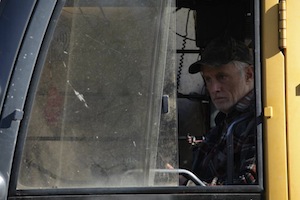 H2N: There are also a lot of scenes where there isn’t a lot of dialogue.
H2N: There are also a lot of scenes where there isn’t a lot of dialogue.
LE: Yes, a lot of the meaning and a lot of the characterization comes out in their physical actions. So it was important that Amy Morton hung out with a bus driver and learned how to drive a bus, and went on a bus route, and got to ask questions, and see what the whole process was like, what the concerns and day-to-day life are like for a bus driver. And then John [Slattery] got to hang out with some loggers, and learn how to drive the logging equipment. And everyone went to the bar, which was a place where we could kind of mix in with people and ask questions. And everyone in this town was really, really helpful and extremely curious about what we were doing, and really wanted to participate.
H2N: So they were welcoming to you?
LE: Very welcoming, yeah. They were willing to share their stories with the actors. So everyone kind of met their counterpart in town, I guess you could say, and was able to learn from them and step into this world by asking questions and by living it. And I also think that just the nature of a movie, when it’s a little bit more physical, there’s less emulation and more experiential acting. When John’s actually driving a piece of logging equipment, and stepping out into the cold, there’s less of him having to do something. That physicality just informs the performance.
H2N: So you brought the actors up to Maine a little bit ahead of time to rehearse and to observe?
LE: Yeah. Half of our rehearsal time was an intellectualization of the script, sitting down and discussing, going back-and-forth with the scenes, and talking about character and motivation and histories. And then the other half was just doing shit, like going out and taking a snowmobile lesson, or going on a bus route, or whatever. And that physical side I think ultimately was just as important as the intellectual sort of typical actor-director emotional discussion and note-taking in the screenplay, and that kind of thing. Which is great, and you need to do it, it’s just a little… in the moment you tend to forget that stuff anyway. It’s just finding the emotional temperature and then kind of living in it.
H2N: I know you shot on 35mm film, did you have much chance to improvise? Or did you stay pretty close to the script when you were shooting? How does what’s on the screen compare to the shooting script?
LE: We did a little bit of improvisation. I’m not that precious about the words, but there isn’t a lot of dialogue in the film to begin with, so there isn’t room to do a lot of riffing. It was all there, and it was very sparely written, so we kind of stuck to it for the most part. Although I’m not really a dialogue guy, so I was fine if anyone needed to rephrase things or rework things, and we did that a lot. But I don’t think shooting on film really held us back in any way in terms of the performance or capturing what we needed, because we were very specific about where we put the camera, and we shot it in a lot of master shots, or we shot it with very minimal coverage. There are hardly any scenes that are covered in a traditional way.
H2N: That really stands out when you’re watching the film. I know you and the DP Jody Lee Lipes have worked together before, but how did you two find that visual language?
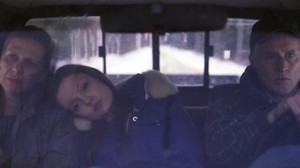 LE: I think we’re both definitely influenced by the same kind of films, and we’re both really specific about intentionality in a scene. And I always knew where I wanted the camera to be for each moment, so it wasn’t about grabbing a bunch of angles and finding it in the editing room. And I tried as best I could not to have too many continuous cuts, so that every time we were changing angle we were also jumping in time, or we were jumping in an emotional moment somehow, so that every beat had its own shot. So we didn’t construct a lot of scenes to be done with traditional coverage. For me everything feels much more intentional and much more direct when you do things that way. It’s just a cleaner, more efficient way to tell a story. And I think part of it, wanting to stay in a master shot or staying wide, was because we wanted to always have pieces of the environment in the frame. So much of the film is about the environment, and about how the environment is having its effect on these characters, we really wanted to make sure that even in interiors we were really feeling the space. And in exteriors especially, having long shots and wide shots and deep focus really allows your eye to take in the environment as well as the character. So a lot of it had to do with the fact that we really wanted to feel the whole space.
LE: I think we’re both definitely influenced by the same kind of films, and we’re both really specific about intentionality in a scene. And I always knew where I wanted the camera to be for each moment, so it wasn’t about grabbing a bunch of angles and finding it in the editing room. And I tried as best I could not to have too many continuous cuts, so that every time we were changing angle we were also jumping in time, or we were jumping in an emotional moment somehow, so that every beat had its own shot. So we didn’t construct a lot of scenes to be done with traditional coverage. For me everything feels much more intentional and much more direct when you do things that way. It’s just a cleaner, more efficient way to tell a story. And I think part of it, wanting to stay in a master shot or staying wide, was because we wanted to always have pieces of the environment in the frame. So much of the film is about the environment, and about how the environment is having its effect on these characters, we really wanted to make sure that even in interiors we were really feeling the space. And in exteriors especially, having long shots and wide shots and deep focus really allows your eye to take in the environment as well as the character. So a lot of it had to do with the fact that we really wanted to feel the whole space.
H2N: Would you light the whole space and have the production designer do everything and then start shooting? Or did everyone know exactly where the frame for each shot was?
LE: I don’t do storyboarding or anything like that. We did some loose shot listing, but then a lot of times we were reworking things in the moment. The house that we shot in was completely empty, and Inbal Weinberg, our production designer, she dressed the whole house as a real, functioning house so that we could shoot 360 degrees at any time. So we were never restricted by our setups. We had 360 degrees, two full stories, of a house that was designed just for this family. It was totally empty [when we arrived] so all the furniture, all the photographs on the mantel, all the books, these were all chosen very specifically to be this family’s house. So we weren’t restricted and we were able to make choices, and we were able to turn things around and everything was the way we wanted it to be. It was kind of like that in all of our locations. It’s incredible actually how much production design doesn’t even really make it into the movie because it was on a far wall and we decided to only cover the scene from a certain angle and we never even got to see it. But I think it was helpful for the actors. It was a great way to work, and surprising, considering that we had a very small budget for it. To really be able to fill out these worlds 360 degrees was pretty incredible.
H2N: So with the blocking the actors could just do what felt right in the moment?
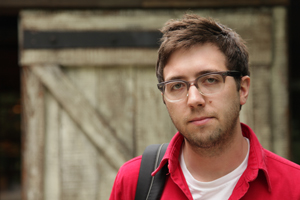 LE: Yeah, we were really flexible. For example, the scene when Brent and Paula are on the couch, and they’re having a conversation and listening to music and drinking the coffee brandy, that’s all one locked off, 2-minute shot that’s pretty wide in the room, and that’s the most you really ever see of Brent’s grandma’s house. But there are all of these amazing snowmobile trophies and photographs and stuff on the far wall that you never get to see that I really loved but didn’t make it into the movie.
LE: Yeah, we were really flexible. For example, the scene when Brent and Paula are on the couch, and they’re having a conversation and listening to music and drinking the coffee brandy, that’s all one locked off, 2-minute shot that’s pretty wide in the room, and that’s the most you really ever see of Brent’s grandma’s house. But there are all of these amazing snowmobile trophies and photographs and stuff on the far wall that you never get to see that I really loved but didn’t make it into the movie.
H2N: But the actors know they’re there!
LE: Exactly. And I really think it helped us to be able to determine where the camera goes [without] any restrictions.
H2N: This was your first feature as a director. Was there anything that surprised you about the whole process, or that you feel like you learned?
LE: I mean, everything, I guess! The whole thing was pretty surprising. One of the things I learned that’s great is if you get the right cast and the right crew you have this whole huge group of people to turn to for inspiration if you ever get stuck. You spend so much time writing alone and conceptualizing the film alone, and then when it comes time to shoot you have a hundred people who can help you get to the place that you need to be. And it took me a couple of days, but I started realize that the more questions I asked other people the better everything became. And the more I involved [the DP] Jody or my actors in what we were doing the better the scenes would turn out. So one of the pleasurable discoveries was definitely learning to lean on my collaborators and learning to put the vision together in a collective manner. Which was great, because writing is so solitary, and you’ve got to solve every problem yourself, and then when you get [to production] you can kind of group-problem-solve. Which was really awesome, and a real relief in a lot of ways to alleviate the pressure of the situation.
H2N: What is next for you, do you know? Or are you just enjoying the process of taking Bluebird out into the world and showing it to audiences?
LE: Right now we’re just sort of enjoying getting the film out there. I’m working on a couple of things, a couple original scripts and some books that I want to adapt. And trying to figure out what I want to be making by this summer, probably, but I don’t know what that is yet. I have always worked the same way, which is just to constantly be developing things, and once something catches on and gets some attention and gets a little bit of momentum then I go full throttle in that direction. I guess we’ll see. I don’t know yet. [He laughs]
— Susanna Locascio








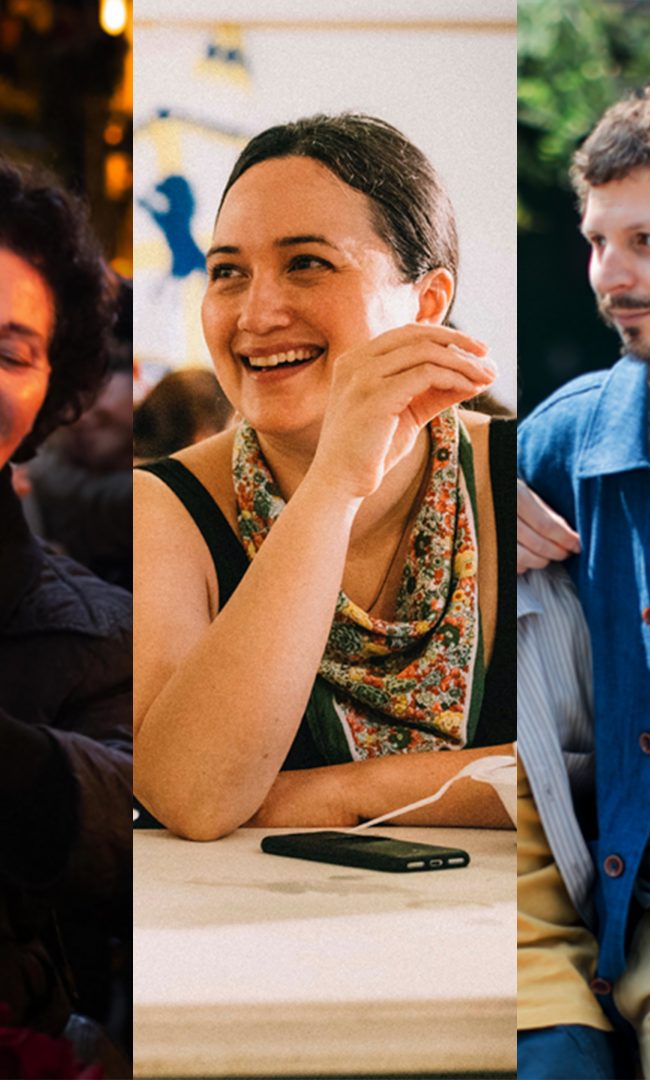
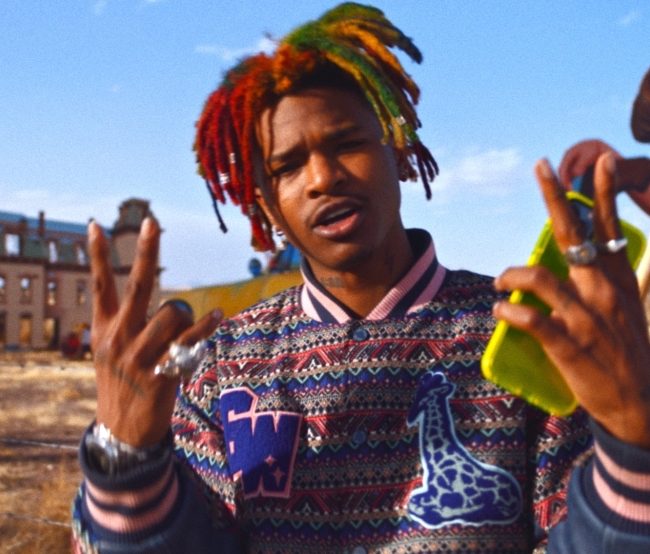


Pingback: TRIBECA ’13: SUSANNA LOCASCIO’S WRAP-UP – Hammer to Nail